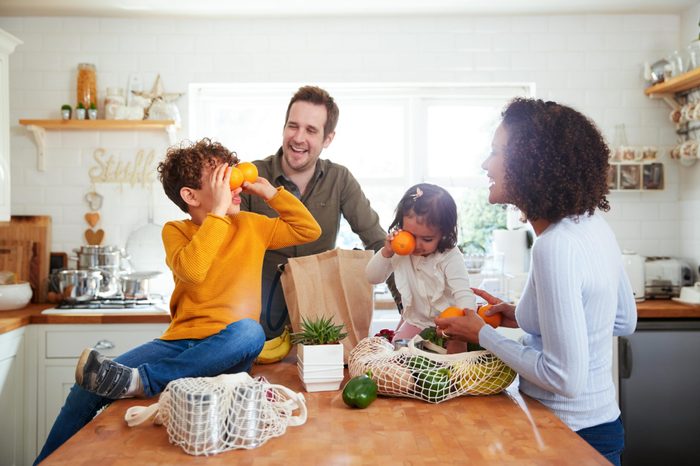
Are you sure you’re actually being eco-friendly?
The definition of eco-friendly is “not harmful to the environment.” But there are two inherent problems with this notion. First, simply avoiding harm isn’t enough to sustain our planet for future generations. And second, a lot of the time, we think we’re being eco-friendly, but we’re actually doing more harm than good. Here are some of the worst “eco-friendly” habits you might be engaging in—and what you should be doing instead.
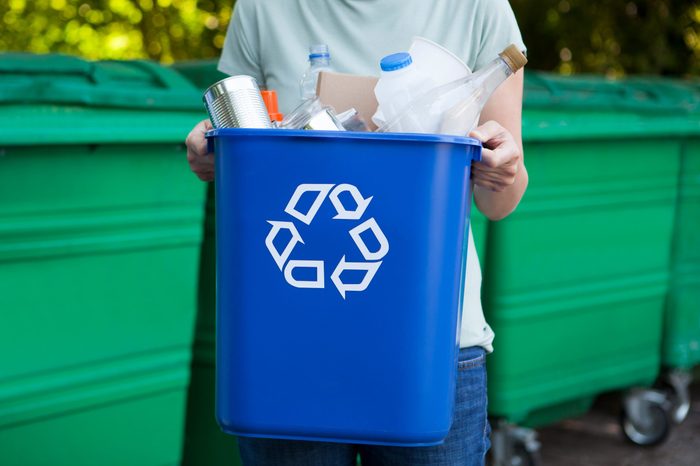
Recycling wrong
No one can deny that recycling is a noble concept that’s definitely worth engaging in. The thing is, that’s actually not true when you’re not recycling properly. “There is a common lack of knowledge in recycling, and so it is often done wrong, causing more harm to the environment than not recycling at all,” says Theresa Hess, Sustainability and Innovation Manager of Tsunami Sport, an eco-based sports brand that repurposes post-consumer plastic to create professional-grade sportswear for schools, sports clubs, and teams across the globe. Examples of “recycling wrong” include:
-
Not cleaning leftover food out of recyclable containers
-
Putting single-use plastic bags into curbside recycling (they jam the equipment at recycling centers)
-
Thinking all plastic is recyclable
-
Thinking if something is mostly plastic, it’s recyclable, regardless of its other components.
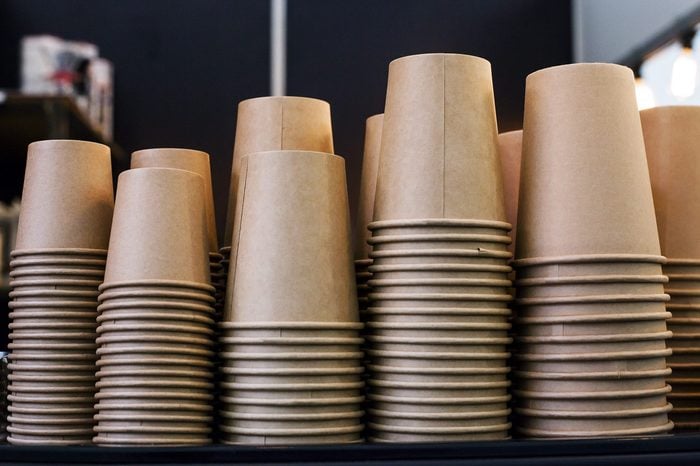
Thinking those “paper” coffee cups are recyclable
Turns out, most disposable “paper” coffee cups aren’t really paper at all, but rather, a paper core coated in a plastic film. Since they look like paper, “you’d think they’re recyclable, but in truth, that plastic film prevents them from being recycled as paper or plastic,” notes Torben Lonne, editor-in-chief of DIVEIN.com, an online magazine focused on scuba diving, travel, and how we can make a positive impact on the environment. So, what should you do with those cups? Perhaps you should consider not using them at all and, instead, bring your own reusable cup when purchasing coffee.
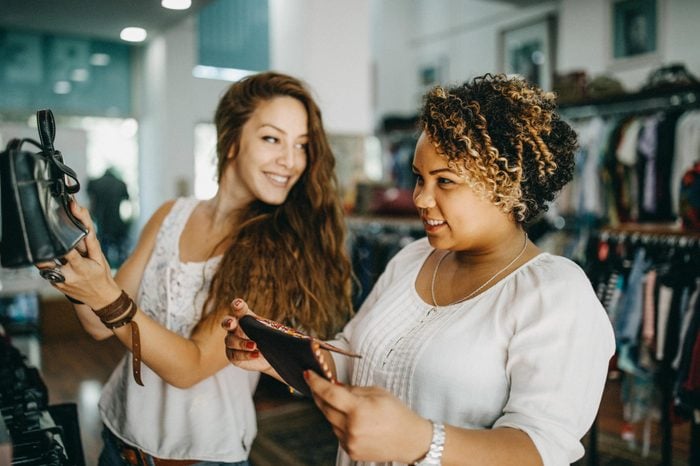
Forgetting about reducing and reusing
Recycling is just one of the three R’s of sustainability. As Hess tells Reader’s Digest, the other two are “reducing” and “reusing.” Reducing means consuming less of our planet’s natural resources, and that includes buying fewer things (even if some of those things tempt you with claims of being “eco-friendly”). Reusing means not throwing things out when they can and should be used again. Both reducing and reusing can lessen the burden on our natural resources and they can also lead to less recycling, which has its own environmental impact and is subject to human error, as discussed above.
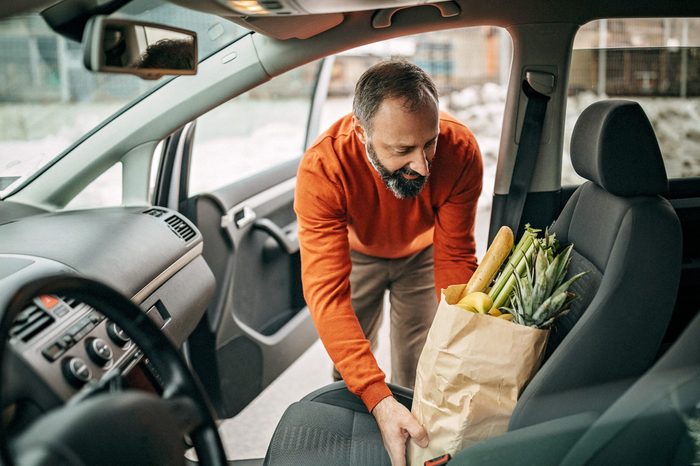
Using paper bags
Think paper is better than plastic? Well, you’re right in the sense that paper degrades more quickly than plastic (much more quickly). The problem is the production of paper bags actually results in more carbon being emitted into the atmosphere than the production of plastic bags, according to Jamie Bacharach, a licensed life coach, wellness expert, and medical acupuncturist with extensive experience instructing patients in how to make more eco-friendly lifestyle decisions. In addition, the production of paper requires the cutting down of trees, and deforestation has devastating environmental repercussions, according to Exela Technologies, whose digital transformation and automation solutions are also considered sustainability solutions.
Instead of using paper bags or single-use plastic bags, Hess suggests going with reusable bags. But please bear in mind that you will have to reuse your bags a lot to really make a difference. Even 100 percent cotton bags need to be used at least 130 times before being thrown away in order to make a true impact on the environment, she explains.
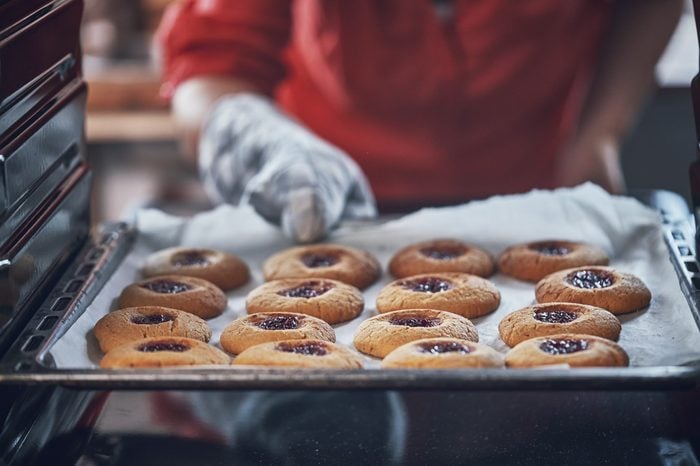
Baking wrong
You might think that baking your own bread or your own desserts can help the environment, and if so, you’re on the right track. You also might think that switching from aluminum foil to parchment paper to line your baking pans can help the environment (since foil can take as long as 400 years to decompose). If so, now you’ve gone off the tracks. You see, parchment paper isn’t really paper. Similar to the “paper cups” that are coated in plastic, parchment paper is paper coated with silicone, which renders it neither recyclable nor compostable. So, what’s a baking enthusiast to do? It might seem counterintuitive, but “investing in a silicone baking mat is a great trick,” according to Jennifer Parnell, cofounder of Humble Suds, a line of plant-based, safe, and effective cleaning products. Just be sure to reuse it.
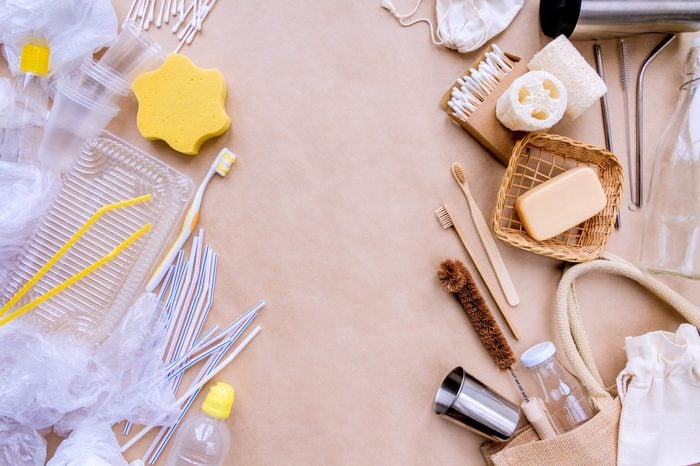
Restocking with eco-friendly items
So, perhaps at this point, you’re feeling tempted to go out and buy yourself a silicone baking mat or a set of reusable bags. Hold up. Yes, buying “eco-friendly” reusable items negates the need for single-use items. But you lose eco-friendly points if you’re buying new items before you use up your existing items or if you’re buying new items you don’t really need at all. Still have 100 sheets of parchment paper? Use it up before buying a silicone baking mat. And before you go out and replace your plastic chair with a wooden one, consider where that plastic chair will end up once you get rid of it. If your attempt at being eco-friendly means you’re acquiring more items, you’re not being as helpful as you think, points out Stephanie Seferian, host of The Sustainable Minimalists podcast.
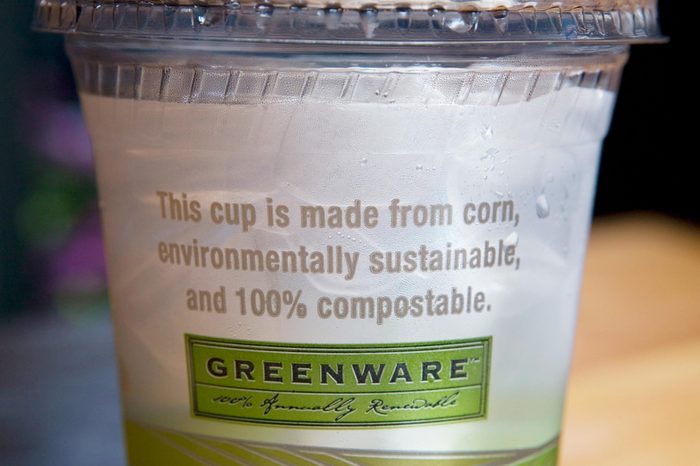
Buying compostable things…but failing to compost them properly
More and more often, plastic containers are being manufactured to be “compostable.” Compostable plastic containers cost a little extra, but if you use and dispose of them properly, they can really help the environment. Doing so requires collecting and disposing of them at a commercial plastic composting facility. If you don’t take that final step, those compostable plastic containers are going to end up in the landfill with all the other plastic. Megan Scott, an expert on sustainable living, advises that if you don’t live near a commercial composting facility, or if you’re not willing to make the occasional trip to one, then you’re better off simply using paper, glass, or metal.
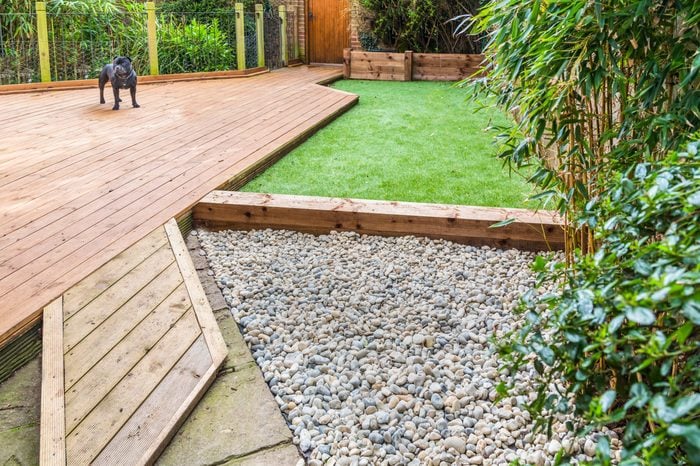
Falling for silly landscaping trends
There’s a lot of misinformation out there about how to have an eco-friendly lawn, points out Cassy Aoyagi, president of FormLA Landscaping, which devotes itself to transforming urban spaces into sustainable gardens. For example:
- Synthetic lawns: These are sold as an eco-friendly alternative to actual grass. However, synthetic lawns destroy the soil under them, need to be frequently renovated, harbor biological hazards, require chemical cleaning, heat the air, and increase flood dangers.
- Gravelscaping: Think you’re helping the environment by replacing grass with gravel? Think again. This practice may help reduce the need to irrigate, but it also increases heat, compresses the soil, kills nearby trees, and increases flood risk.
- Drought-tolerant grass: In theory, drought-tolerant grass sounds great because it means less watering is needed to keep your grass healthy. Unfortunately, much of what is sold as drought-tolerant is made up of invasive species of grasses that have been known to cause or exacerbate the risk of fire dangers, particularly in the West. “In Los Angeles, the worst among them are Feather, Fountain, and Pampas grasses,” Aoyagi notes.
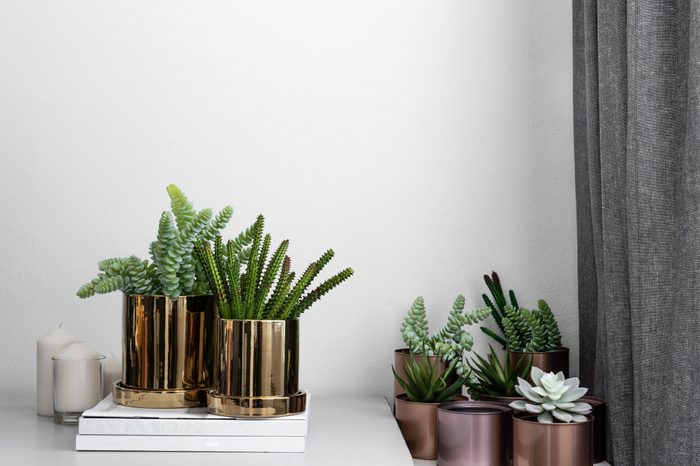
Opting for plastic plants
In an attempt to save water and the resources required to pump it, many people opt for plastic plants in their homes. But this is a mistake, according to Angat Saini, principal and founder of Accord Law. While plastic plants do save on water, they’re plastic, and plastic is problematic for the environment in that it is so durable, it can last up to 1,000 years in a landfill. Even worse, plastic does absolutely nothing for the environment, whereas actual living plants actively help to clean the air of carbon (in the form of carbon dioxide). In case you were wondering, here’s what really happens to recycled plastic.
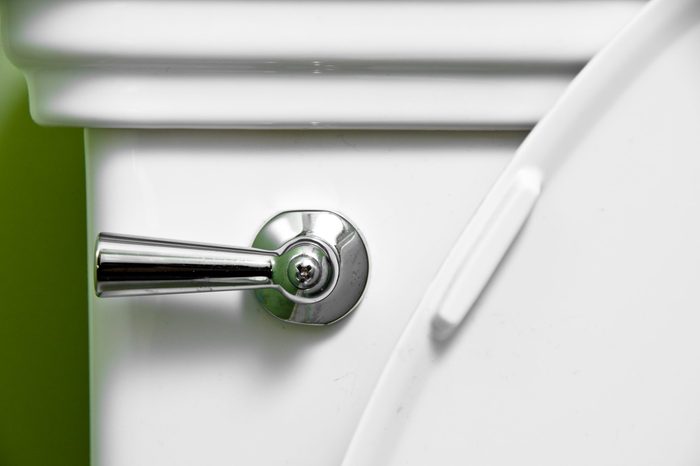
Flushing your dog’s poop down the toilet
No one would blame you if you thought that by flushing your dog’s poop down the toilet, you were doing the Earth a favor. But still, you’d be wrong because flushing dog waste can spread cryptosporidium, a parasite that sewage-treatment plants are not currently equipped to filter out, according to PetMD. That’s not just risky to the human population—it’s also risky for the environment. An outbreak of “crypto” would cause people to use even more resources to manage their symptoms (for example, excessive toilet flushing).
Similarly, composting dog poop is also a bad idea for the environment. The temperature required to kill the sort of pathogens found in dog poop are too high for ordinary homeowners to achieve in their compost piles. And commercial composting centers tend to frown upon dog waste. So, the best way to dispose of your dog’s poop is putting into your garbage so that it ends up in a landfill.
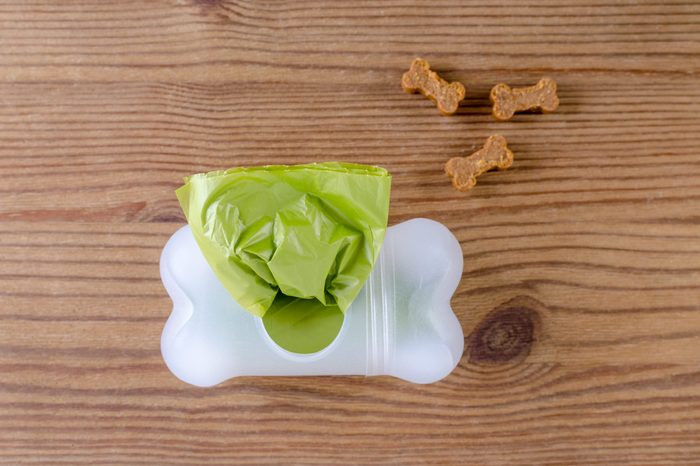
Using biodegradable dog-poop bags
Since the definition of “biodegradable” is something that is going to eventually break down into natural materials, it sounds like biodegradable dog-poop bags would be a great intermediate step to getting your dog’s waste to the landfill. But even certified biodegradable bags don’t necessarily biodegrade under the conditions found in many landfills, according to Rover. If you live in a rural area, you can bury the waste—at least five inches underground and at a safe distance from your house, vegetable gardens, and water sources. Or, no matter where you live, you can opt for a plant-based dog-poop bag such as BioBag. By the way, these are the 9 most recyclable materials on the planet.
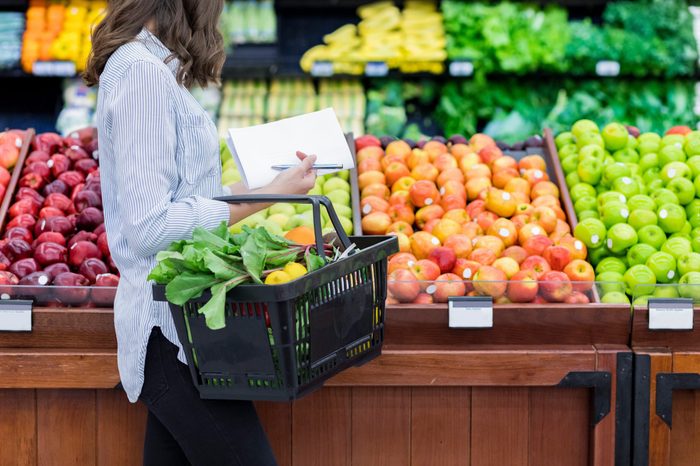
Buying organic because you think you’re helping the environment
Organic clothing is not inherently eco-friendly. Nor is organic food. Let’s start with organic clothing. As noted above, buying anything new uses precious resources. “A better and more eco-friendly option is to shop secondhand, thrift, or vintage stores, participate in clothing-swap parties, and learn basic sewing techniques to mend clothes rather than toss and replace,” according to Randi Ragan, author of A Year of Living Mindfully: Seasonal Practices to Nourish Body, Mind and Spirit.
As for organic food, while eating organic acai berries from Brazil might seem super healthy, if you don’t live in Brazil, then those berries are being shipped a huge distance, with an enormous carbon footprint, Ragan explains. “Try shopping at farmers’ markets within 100 miles of where you live (or join produce co-ops) that source seasonally and locally and avoid out-of-season fruits and vegetables because they will be shipped from abroad.” In addition, she recommends talking to farmers at farmers’ markets to learn about their methods. “Many don’t use chemicals and so are essentially organic, even if they can’t afford to be certified as such.”

Embarking on certain home-improvement projects
Eco-friendly home-improvement projects aren’t necessarily eco-friendly, according to Keith Melanson, project manager of RenosGroup, a home-renovation company. First and foremost, home-improvement projects are never eco-friendly if they are not needed. Second, sometimes a home-improvement project need not be as extensive as we think. For example, you can replace your kitchen cabinets’ doors without replacing the entire structure. Finally, just because a paint is marketed as “low VOC” does not mean that it won’t release chemicals into the air. It’s better to use all-natural finishes such as milk paint (and always ventilate while painting), according to Faith Teel, a furniture designer at Artisan Built-ins, a custom-cabinet business near Asheville, North Carolina.
